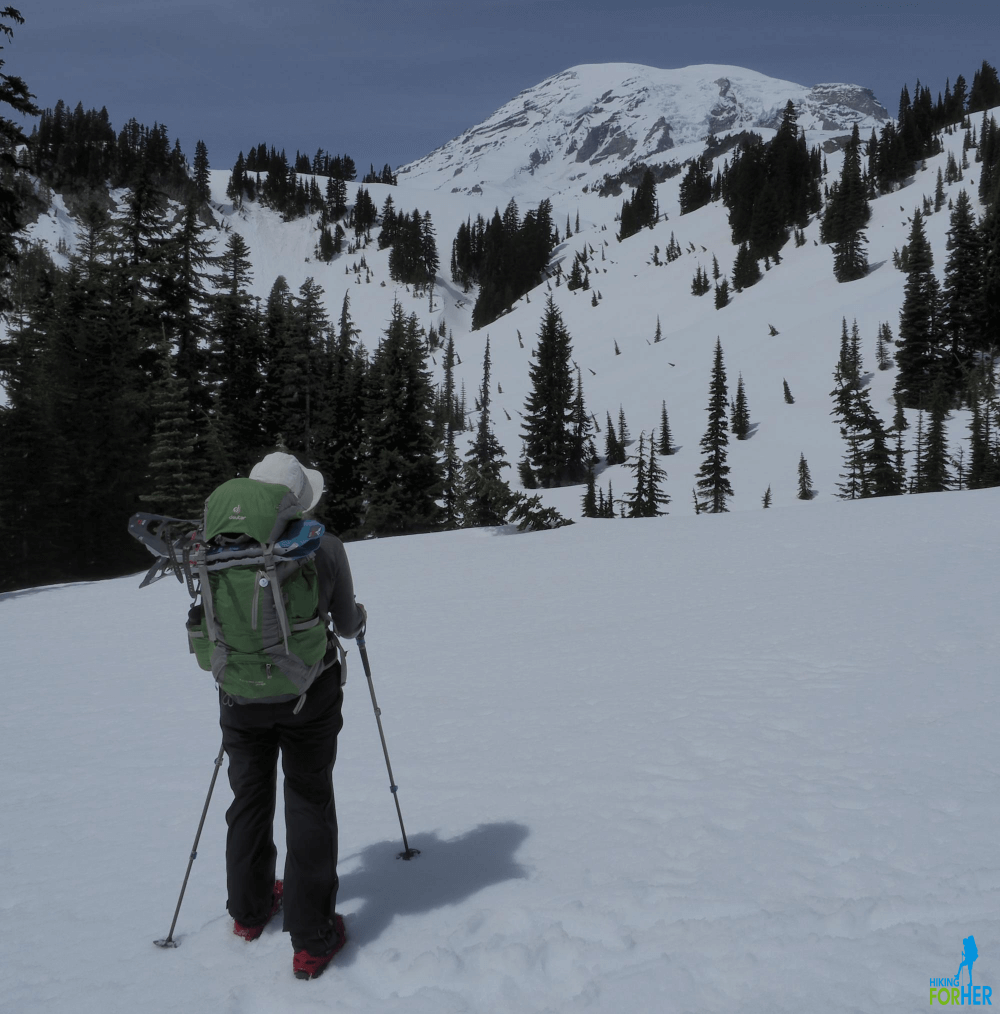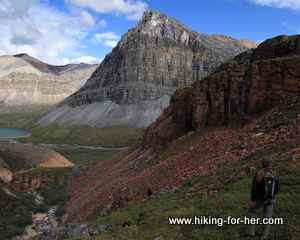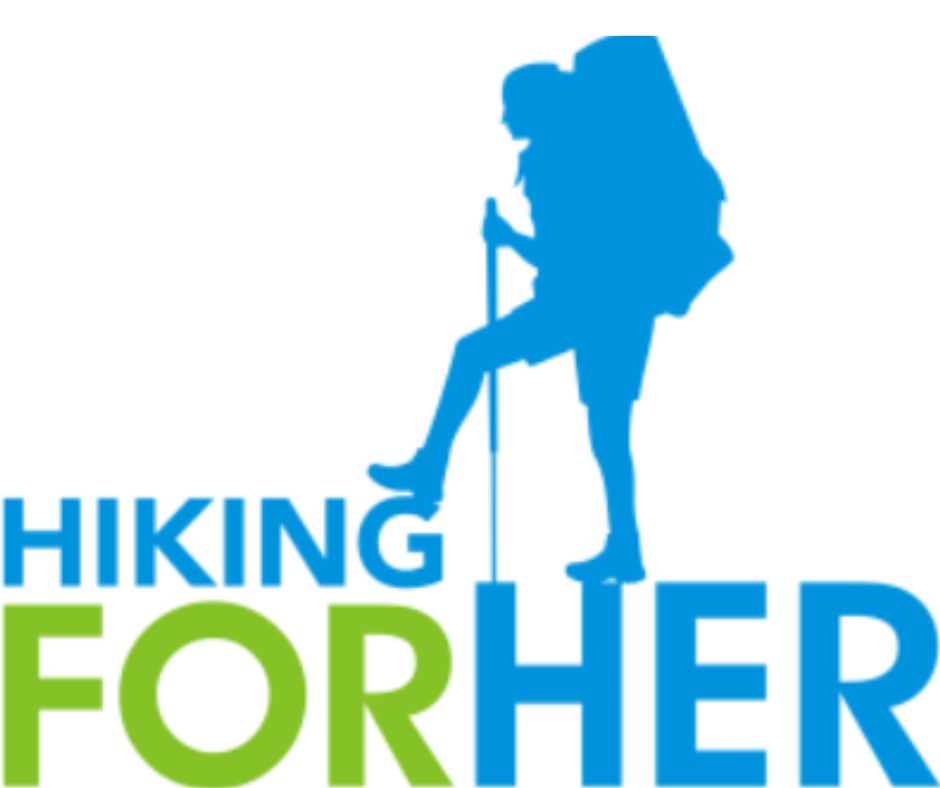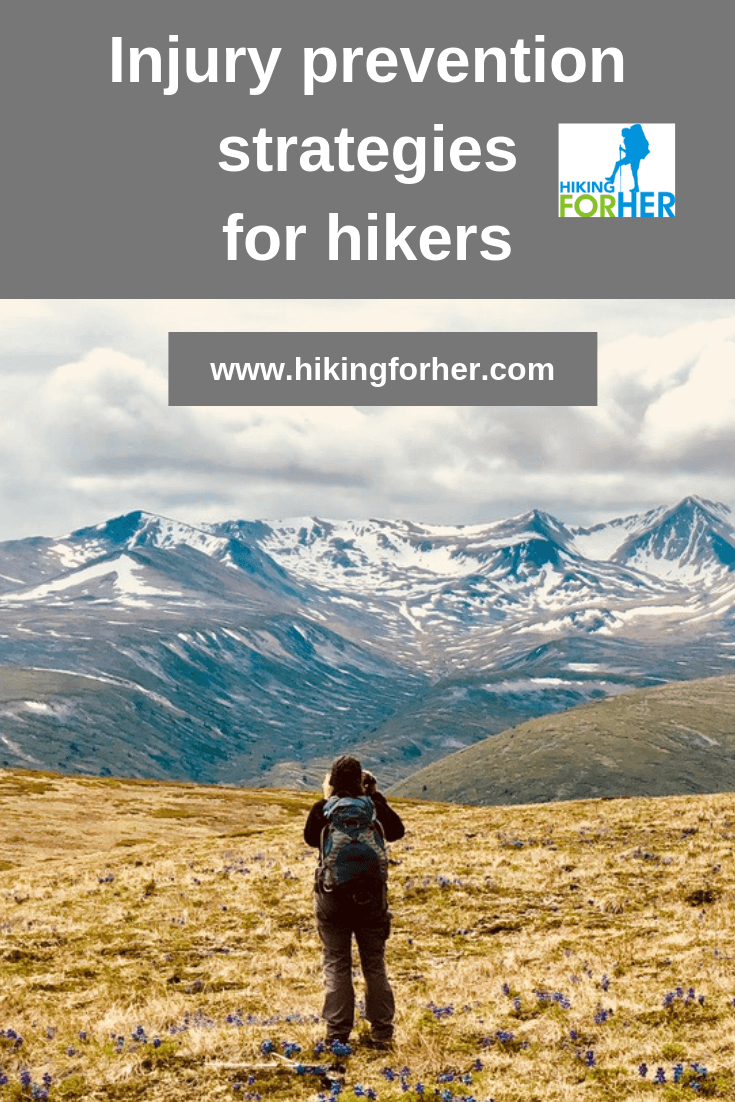Hiking Injury Prevention:
How To Stay Out Of Trouble
As a Hiker
By Diane Spicer
Injury prevention:
Avoid the pain, rather than be sidelined by it later.
Good philosophy, don't you agree?
Injury prevention for hikers requires two convergent streams of information:
- How the human body works during a hike
- How to make good choices to protect the body from the repetitive stresses and strains of hiking
So allow me to be your tour guide of the "moving parts" which bring you from trail head to summit - or lake, waterfall, vista, campsite, wherever you're headed on the trail.
Within each body location, we can turn our attention to a separate, but related matter: injury prevention for hikers.
Skip directly to injury prevention tips for these parts of your hiker's body:
Suggestions, not advice,
for you
Rest assured, these are not trivial topics for me!
I'm a Naprapath as well as a medical massage therapist, trained in soft tissue manipulation and anatomy, with years of experience in dealing with muscle, ligament, tendon and myofascial injuries.
I've also taught anatomy & physiology at the college level.
So you're in good hands for learning a few prevention tips!
But this injury prevention discussion is not medical advice.
- There will be no discussion about how to diagnose or treat injuries, beyond the common sense hiker approach of "where does it hurt?" and "what can I do on the trail?"
- Always consult licensed health care providers and make your own decisions about how to be a strong, healthy hiker.
Now let's get started on our overview tour of the injury prevention strategies you as a smart hiker can utilize to keep yourself strong and able to hike.
- Use the links in each section to get lots of details as we go along.
Injury prevention for hikers:
start with feet & ankles
It's smart to be proactive with your lower body, because as a hiker, it's your ticket into the back country.
Or a stroll through the county park with your dog.
Let's start at ground zero (small hiking pun), shall we?
Your feet.
Your feet can defeat you, or bring you to glorious places in the wild.
They bear the load of your body, your backpack and hiking gear, your camera, your water bottle - whatever means "hiking" to you.
And they ache (as in sore feet) at the end of a hike, don't they!
And sometimes they swell up - use these tips on how to deal with that problem.
Foot injury prevention:
- If you've never stopped to appreciate all the bones, muscles, tendons and ligaments in your feet, now is the time!
Strong hiking bones in your feet are fundamental, so here are tips just for them.
Ankles
Just a nuisance when you bang that bumpy part as you hop over a blow down on the trail?
Ample feeding grounds for mosquitoes?
Nope.
Try this definition of ankles:
- An intricate anatomical connection between feet and legs to give you mobility without sacrificing strength.
Time to explore your ankle injury prevention strategies!
Consider your hiking footwear and socks
If your boots are uncomfortable, or your socks are too tight or keep pooling around your ankles, you're going to alter your gate.
That can lead to injury and discomfort.
Tips for the best hiking footwear:
 Keep hiking all year round!
Keep hiking all year round!
Lower body
Hikers are also known to suffer from sore lower body muscles, and to "pull" muscles during heroic creek crossings.
They are also known to fall down, although these tips for avoiding falls on a hike might help.
The following links will help you zero in on the area which is causing you problems right now.
Plus provide tips for injury prevention in the future.
Legs/calves and thighs
If you've ever uttered the sentence "My legs are killing me", you know exactly which muscles are involved in moving you up and down the rocky trail.
Because these muscles are physically connected to your ankles and knees, they require a bit of preventive maintenance and are very worthy of your time and attention.
A "pulled" muscle can become a serious matter if you're miles from the trail head, so take a close look at the muscles which provide power for each step along the trail.
Hiker's knees
What an amazing joint the knee is for a hiker!
It's stable, strong and reliable when you treat it right with the proper footwear (see above) and realistic hiking loads.
A quick tour through the nicely designed cooperation between bone and muscle will convince you that protecting your knees is important if you want to keep hiking into your golden years.
And a few tips for hiking with sore knees.
Or hiking with arthritic knees.
Hips
Your hips are created by the pelvic basin, a bony bowl to hold some of your internal organs, and to allow passage of a baby into the world.
The bones which create this bowl are also weight bearers, and that includes the weight of your backpack & camera gear.
Strong thigh muscles anchor to these bones, and provide power on the trail.
Injury prevention here is a simple matter of not overdoing the amount of weight you are asking the body to carry - or is it?
- Hip injury prevention tips here
Now let's transition into the midline of your body.
Your back
The human spine is not really great at keeping us upright against
gravity while bearing loads, unless the muscles anchored to the back
bones are strong.
So if you suffer from hiking back pain, here's where injury prevention comes in: keep your core muscles strong to prevent back injuries.
Take a few moments to stretch at the trail head, both before and after your hike.
Be mindful of how you pack your backpack, too.
Your upper body gets a good work out
on every hike
Lots of hikers focus on the lower body as the logical place to do some proactive injury prevention.
But you use your shoulders and arms to hoist a backpack, rig a bear bag, scramble up a steep rocky face, and lots more on a backpacking trip or day hike.
If you're not already doing a bit of weight lifting for strength, and yoga or swimming for flexibility, please consider adding it to your weekly routine.
Strong shoulders make a hiker happy
When you think of your shoulders (and you might, if they ache after a hike), do you realize that there's a connection to your rib cage as well as your backbone hidden under the muscles?
Well, there is!
Paying attention to shoulder injury prevention tips will pay off in less aches and pains elsewhere.
Arm yourself with strength
C'mon! Preventing arm injuries for hikers?
Yes, that might seem like a "stretch" (hint).
Until you keep track of how many times your arms lift your pack, swing back and forth on the trail grasping trekking poles, pull you up onto that perfect rock perch over the river, and work in harmony with your shoulders.
So use that link above.
Wrists and hands
These parts of a hiker's body take a
lot of abuse:
- scrapes and scratches
- cuts and burns
- splinters and
slivers
- contact with the abrasive surfaces of rock and tree limbs
Injury prevention might be too much to ask for!
But let's be extra careful as we swing our packs onto our backs, tie our boots, and hoist ourselves up and over blow downs.
Easy does it!
And be mindful of where you put your hands in snake country.
- Use your trekking poles or a stick to probe around before you sit down.
Another trail tip: If you're falling, don't brace yourself with an outstretched arm if you can avoid it.
- Fall on your backpack padded shoulder area and spare a broken wrist.
Do your fingers swell up as you hike?
- Use these strategies for coping and prevention of this problem.
Neck injury prevention
for hikers
The neck is one part of my body that is always sore after a hike, regardless of how I fiddle with my backpack straps and how many times I remind myself to use good posture while hiking.
- I tend to crane my neck forward as I pick my way through a boulder field, which creates tension in the strappy neck muscles holding my head onto my shoulders.
That's why I'm particularly interested in keeping my neck injury-free!
Can you relate?
Ta da! Tour over
So there we have it: a brief tour of your hard working hiker's body, with many links to informative injury prevention tips.
I hope you can appreciate the moving parts, and also appreciate the need for regular preventive maintenance.
Why be one of those hikers limping down the trail, when you can be one who glides happily, even after a long day of hiking?
The wild places of the Earth are waiting for you!
Don't be hobbled by soreness and pain, when you can be proactive as a hiker.
- Or use these pain relief self treatments in conjunction with injury prevention to get yourself out on the trail.
 Injury prevention means you'll have more time to get into the wilds!
Injury prevention means you'll have more time to get into the wilds!Hiking Injury Prevention

About the author
Diane is the founder of Hiking For Her.
She’s been on a hiking trail somewhere in the world for nearly five decades, & loves to share her best hiking tips right here.
|
I get emails all the time about what I wear, eat, carry and love to use on the trail. That's
why I provide affiliate links to you: the best gear that I use myself and have seen used by other hikers is instantly
available for your consideration, and the gear company sends a few
pennies per dollar to this reader-supported hiking website. There is no added cost to you! Everyone ends up a winner: Great gear for you, strong gear companies, and more free hiking tips for everyone. Thanks very much for your support. It's warmly and sincerely appreciated. It also helps send these hiking tips to all your virtual trail buddies around the globe. |
 |



